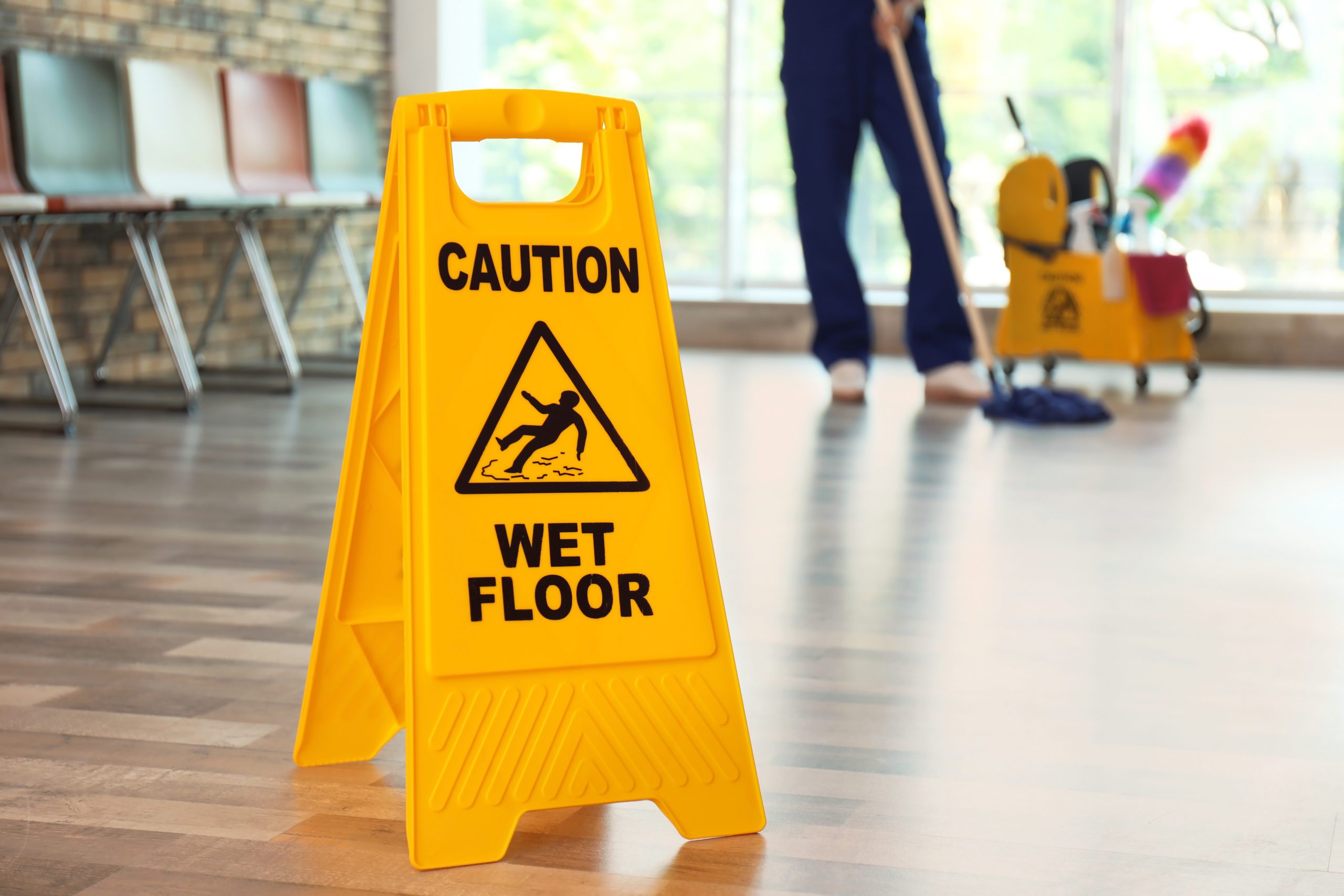Slips and falls are some of the most common causes of injuries in the workplace. To add insult to injury, slip and fall accidents can be deadly. They claim thousands of lives per year. Approximately 30% of all slip and fall accidents result in moderate to serious injuries. These can range from fractures to brain damage or even death. These occurrences have led to 19,000 deaths per year because of falling.
It’s important that janitorial teams and facility managers apply best cleaning practices to help prevent slip and fall accidents.
Slip and Fall Injuries
There is a responsibility in the workplace to encourage a safe working environment for employees and patrons. When organizations fail to do so, it results in costly workplace injuries and sometimes fatalities. Workplace injuries, also known as occupational injuries, are a type of injury that occurs in correlation to their occupational requirements. For janitorial services, it’s imperative to understand workplace injuries so that they know what to look out for. For employees, it’s important to know what to do if a workplace injury occurs.
Injuries sustained during a slip and fall accident vary widely but can include soft tissue injuries, bone or joint injuries and injuries to the head or spine. It’s possible that in some of these instances the injuries are able to heal and fully recover in a matter of days. However, some may require elongated periods of rehabilitation, surgeries or permanent medical accommodation.
In a 2019 report, some of the most common non-fatal workplace injuries in America included sprains and tears, accounting for approximately 35 injuries per 10,000 full-time employees; soreness and muscle pain, accounting for nearly 18 injuries per 10,000 full-time employees; and cuts and lacerations, accounting for roughly nine injuries per 10,000 full-time employees, among others.
While they may be less common, fatal injuries occur. In recent years, the number of fatal workplace incidents has continued to rise. Some of the most common causes of deadly workplace accidents include slips and falls, which accounted for approximately 900 deaths in 2019.
Implementing a Coordinated Cleaning Program
When facility managers establish a cleaning program, they’re ensuring floors are being cleaned regularly and in a safe way. The program should set a standard for cleaning schedules and contain various elements including consideration of peak hours, traffic patterns and weather conditions. It should also consider the drying time for the area being cleaned. Appropriate barricades should be put in place to redirect traffic during cleaning. Furthermore, all cleanings should be documented and regularly maintained in inspection logs. A series of written floor-cleaning procedures should be put in place and updated per any changes, such as when a new floor surface is laid, when new cleaning products are used and if the work environment has changed. Additionally, it’s important to evaluate the written procedures from time to time to make sure they are being followed and are effective.
Training Your Janitorial Team
One of the most critical aspects to your cleaning program’s success is training employees on cleaning policies and procedures. Your employees should be aware of all housekeeping procedures, including specific procedures for high-hazard areas. As part of this standard, all areas should be checked to ensure proper drainage is in place. It’s crucial to clean all areas thoroughly without taking any shortcuts. When cleaning up spills or mopping, proper signage like wet floor signs should be used in order to caution staff, occupants and visitors. In addition, any wet carpet areas should be marked, as these areas are easily overlooked but dangerous when walked over.
Choosing Cleaning Products
Prior to use, it’s good practice to test all products on a small section of the floor. This helps ensure that they are suitable for the floor surface. Several floor cleaning product suppliers or manufacturers will offer technical support when selecting the appropriate products for specific types of floors and requirements. To ensure quality, test your cleaning products prior to purchase. This will save you time and money by avoiding expensive products that don’t work up to par. Don’t ignore the manufacturer’s instructions on safety and application. Additionally, make sure to provide training for using, mixing and applying products such as chemicals, including equipment maintenance.
Paving a Path to Avoid Slips and Falls
Slip and fall accidents are some of the most common in the workplace, and many of these accidents result in serious injury. As part of your workplace ethics, promoting a safe working environment is imperative. Not only are slip and fall accidents detrimental to your employees, but recovery time also affects your bottom line. That’s why safety should be implemented in your cleaning program, and the products used should be tested to ensure quality. Clean floors pave the way to safe floors.
